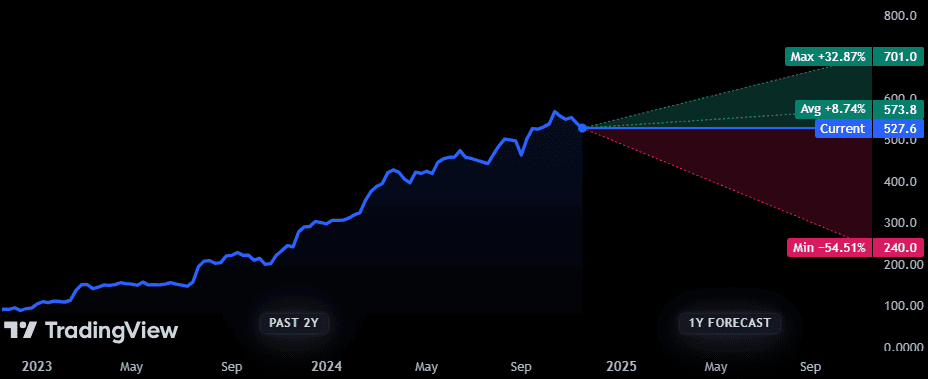As 2025 approaches, what is the forecast for Rolls-Royce shares?

Image source: Rolls-Royce plc
After returning dividends earlier this year, Rolls-Royce (LSE: RR.) shares have regained some of their old charm. And just in time, as growth seems to be slowing down.
Now I wonder if 2025 can continue to bring the same benefits of the last two years. Almost 500% from November 2023, it is hard to imagine that kind of growth will be repeated.
There has been a significant drop in the UK market since the October budget was announced, fueled largely by trade fears following the US election.
It seems that Rolls-Royce has hit harder than most. The stock is down about 8% since the US election results were announced, while the FTSE 100decreased by less than 1%. Aerospace and defense giant BAE Systems down 3.5%.
Predictions for 2025 and 2026
In August, Rolls-Royce shares rose 8.9% after the company announced plans to pay 30% of its pre-tax profit as dividends by 2024. It also plans to increase this to between 30% and 40% thereafter.
The final dividend for 2024 is expected to be 5p per share, representing a yield of around 1%. This is forecast to rise to 6p in 2025 and 8p in 2026, with yields of around 1.2% and 1.5% respectively.
Earnings per share (EPS) are expected to come in at 18p per share this year, rising to 20p in 2025 and 23p in 2026.
With earnings growth expected, the company’s price-to-earnings (P/E) ratio will likely decline to 26.4 next year and 22.9 in 2026. Profits are predicted to increase by 22.4% in 2025 and 20.6% in 2026.
Mitigating factors
There are, of course, other factors that may affect these predictions. In particular, the growing conflict between Russia and Ukraine now threatens the wider Europe.
As a manufacturer of military aircraft engines, Rolls is deeply connected to conflict. Subsequently, defense spending has been the main driver of its growth over the past few years. But it’s a double-edged sword. The conflict has led to a host of problems for European businesses, from procurement issues to rising energy costs. These costs can eat into the company’s profits.
Delays in the supply of construction materials and parts used in its factories can affect production, reduce sales and increase operating costs. And a significant escalation of conflict could plunge the economy into recession, damaging its stock price.
A sobering thought

The reintroduction of dividends may initially help boost the share price but last month it fell by 6.6%. While there are expectations for average income growth, I don’t expect to see the same performance as previous years.
If the company can successfully navigate the challenges posed by the war in Ukraine, the long-term prospects still look good. If earnings continue to grow as forecast, they will add significant value in a few years time.
However, I expect that the short-term recovery will be disappointing compared to 2023 and 2024.
While UBS, JPMorgan again Goldman Sachs all save Buy ratings on stocks, price forecasts are not exactly encouraging. The 12-month price average is £5.73, which is an increase of 8.74% from current levels.
I might consider sharing in the future, but for now, they’re not at the top of my list.
Source link



